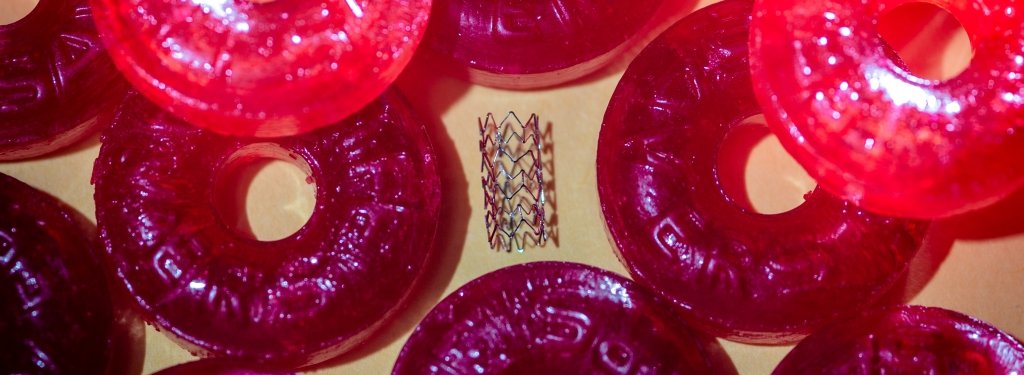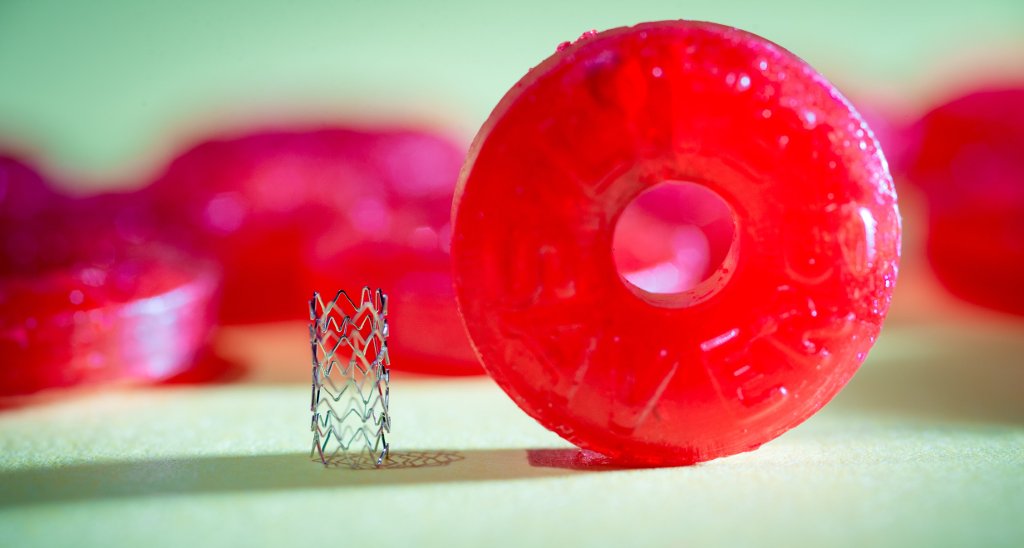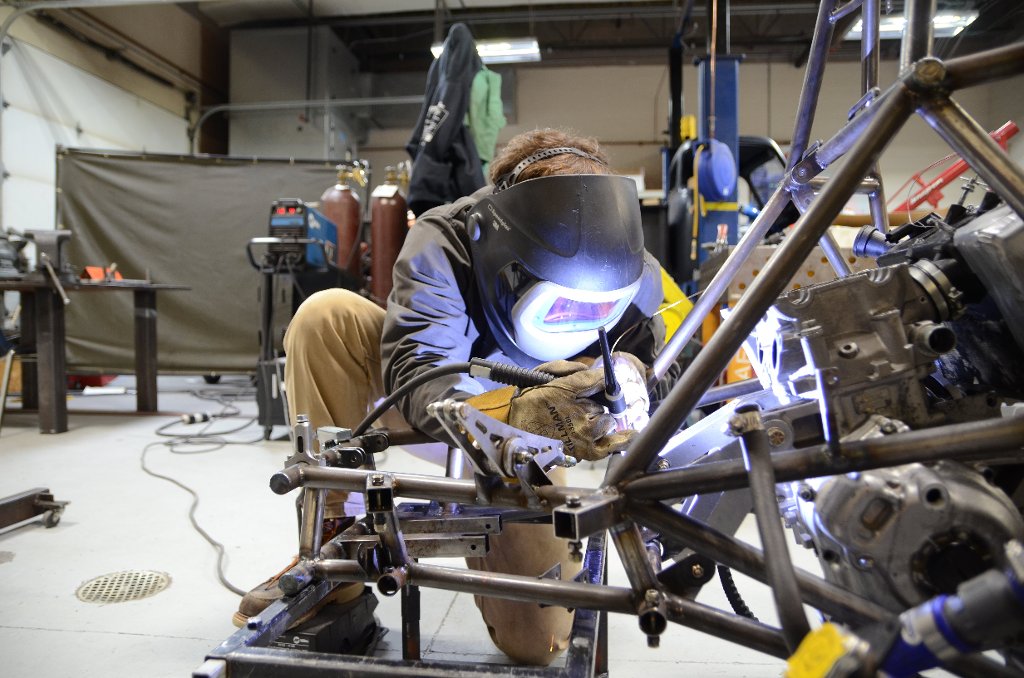They're lifesavers in an emergency, but stents can cause complications years later. Jeremy Goldman's solution is outside of the box, and the process is as revolutionary as the product.
It's natural, bioabsorbable, and capable of preventing harmful side effects: Jeremy Goldman explains why zinc may be the sweet solution to troublesome permanent stents.

Blocked artery, the doctor says. Too much plaque clogging the inside, curbing the flow of oxygen-rich blood to the heart and raising the risk of blood clots. Better widen the opening with a balloon-tipped catheter and insert a stent—a tiny wire mesh tube—to keep the artery propped open as it heals.
This familiar medical scenario is becoming even more common as our population ages and methods for detecting cardiovascular disease improve. Usually the procedure goes well, the artery wall heals around the stent within a few months, the artery stays open on its own, and that's that.
But sometimes, years after the stent has done its job, the once-helpful device reveals a downside. A permanent stent can trigger inflammation or clot formation, or it can break and injure the blood vessel. And even if nothing goes wrong, patients aren't crazy about having a piece of metal stuck in their vasculature forever. Wouldn't it be better if stents could just do their work and then, once they're no longer needed, disappear?
"In general, stents are not thought to be beneficial past one or two years. Making a bioabsorbable stent could be an attractive solution. You could have all the early beneficial characteristics, but none of the harmful later ones, and you'd be left with a natural artery."Jeremy Goldman
It would, and that's precisely the idea behind bioabsorbable stents, the goal of research in Jeremy Goldman's lab.
The concept has been around for a while, and other research groups have been experimenting with various biodegradable materials for stents. Polymers looked promising because they perform well in other bioabsorbable medical devices, but polymer stents have proven weaker and harder to position than metal ones, so corrodible metals such as iron and magnesium also have been considered. So far, those metals haven't worked ideally in stents, either, leading some researchers to tinker with the metals' properties in hopes of improving their performance.
Goldman and colleagues took another approach. "We decided to jump out of the box. Instead of trying to manipulate the materials that were being used, we went with an entirely different metal: zinc."
Why zinc? Like iron and magnesium, it's found naturally in the body, where it contributes to essential biological functions, such as enzyme activity. There's even evidence that zinc helps keep arteries clear—an added benefit for a stent-making material.
"It's exciting to realize that it's possible to do all of this when you're based at Michigan Tech. I don't feel limited by geography." Jaroslaw Drelich
In addition, "zinc's metallurgical aspects are well-established," said Goldman. "We know a lot about its mechanical behavior and elements that can be used with it to change its mechanical properties."

So Goldman and his collaborators—Materials Scientist Jaroslaw Drelich and Drelich's graduate student, Patrick Bowen—set out to explore zinc's behavior in the body. Once again, they took a novel path instead of treading in other researchers' footsteps.
"When we looked at the literature, we noticed that people were going straight from the bench to animal testing with stents, with nothing in between," said Goldman. Certainly the materials needed to be tested in animals, but did the researchers need to go to the expense of fabricating and testing zinc stents so early in the process? Not really.
Goldman's group realized they could test corrosion rates and breakdown products of zinc and zinc alloys by implanting simple wires made from those materials in rats' arteries. This way, metals could quickly and inexpensively be screened for further investigation. "If early results with the wire look good, then we can go ahead and make stents with the material and do large-animal testing," Goldman said.
Results of their first attempts, published in the journal Advanced Materials in 2013, showed that for the first three months after implantation, zinc degraded harmlessly in rat arteries, at a rate near that considered ideal for a bioabsorbable stent. After that, the rate gradually increased—an indication that a zinc stent wouldn't linger too long in the body.
The only problem: pure zinc isn't strong enough to make a stent that will hold an artery open as it heals. However, additional experiments suggest that alloying zinc with other materials may propel the research over that hurdle.

Underway are biocompatibility studies of zinc's breakdown products, and progress toward animal testing of stents made from the most promising zinc alloys. A German company is making the stents, and collaborator Martin Bocks at the University of Michigan's Congenital Heart Center plans to implant them in pigs sometime in 2015.
The project is an international, interdisciplinary effort that links industry and academia, clinicians and researcher scientists, said Goldman, who's also working with metallurgists in Israel on some of the zinc alloys.
"It's exciting to realize that it's possible to do all of this when you're based at Michigan Tech," he said. "I don't feel limited by geography."
Michigan Technological University is an R1 public research university founded in 1885 in Houghton, and is home to nearly 7,500 students from more than 60 countries around the world. Consistently ranked among the best universities in the country for return on investment, Michigan's flagship technological university offers more than 120 undergraduate and graduate degree programs in science and technology, engineering, computing, forestry, business, health professions, humanities, mathematics, social sciences, and the arts. The rural campus is situated just miles from Lake Superior in Michigan's Upper Peninsula, offering year-round opportunities for outdoor adventure.




